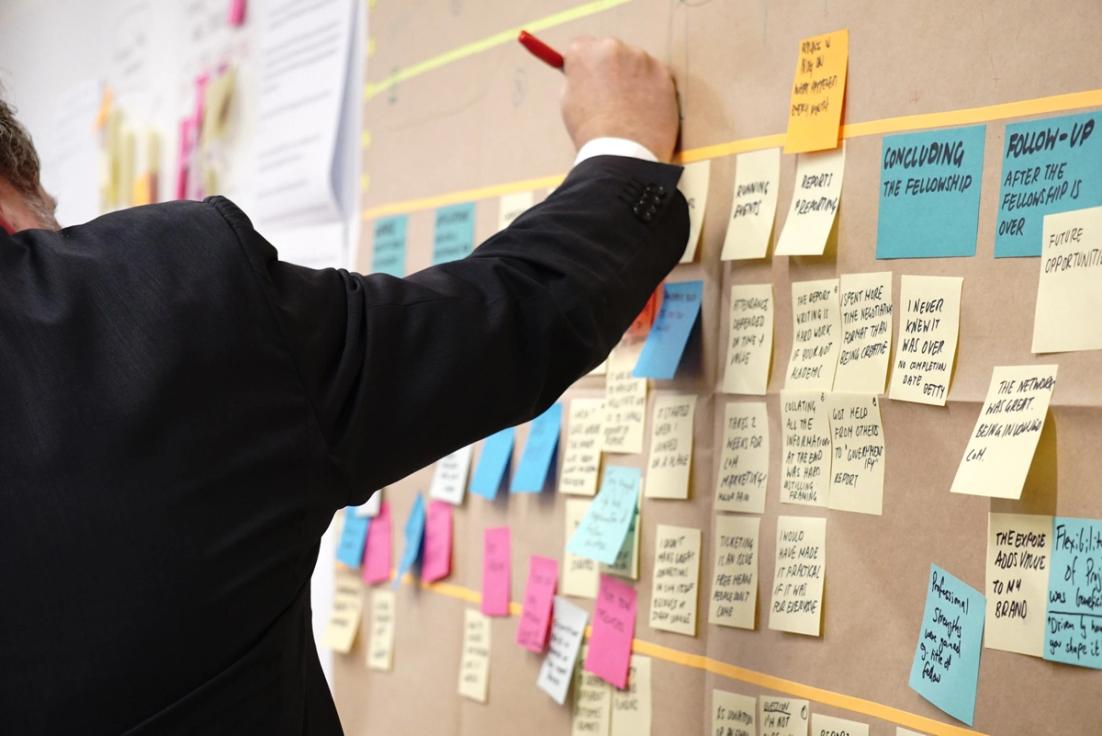As 2022 has come to an end, let’s take a look at the year ahead of us through the lens of HR. We’ve transitioned from a great resignation where talent had plenty of choice to a reality where redundancies and hiring freezes are becoming more and more common in our current economic freeze. Despite the reality of today's challenging times, HR departments now have an unprecedented opportunity for transformation. Let’s take a look at HR trends for 2023.
1. A Focus on Improved Onboarding Systems
An onboarding system overhaul is well overdue, at least for the majority of organizations. According to Cezanne research, nearly two-thirds of employees found their onboarding experience to be stressful, and one-fifth of employees felt misled by the original job listing. These experiences have been further complicated by remote and hybrid work environments; Over a quarter of remote/hybrid remote workers surveyed said they’d been let down by poor onboarding – indicating that there’s still a big disconnect. With these statistics in mind, it’s no surprise that improving onboarding processes comes as a high priority for HR.
How can HR respond?
- Personalized onboarding plans: Capacity allowing, build a personalized and goal-specific onboarding plan for each employee. This will keep new hires feeling connected and having a clear understanding of what’s required from them in terms of productivity.
- Foster connection: Prioritize connecting new hires to team members in meaningful ways to prevent them from feeling isolated. Not only does this make the onboarding process more pleasant, it’s also a great strategy for retention.
- Assess your organization’s tech: A lot of your software will be unfamiliar to new hires, with up to 91% of employees feeling frustrated by work tech generally and 57% by legacy tech. Make sure to set up a plan for getting people up to speed with the tech they need to work with, and also a plan for getting new employees’ inputs on new tech solutions they want to work with. Often, new hires bring new perspectives that can add tremendous value to the company, so rather than merely telling them what they need to learn and be able to work with, ask them what they suggest and want and make sure that information is conveyed and aligned with what is happening with your product and departments.
2. Prioritizing Employee Wellbeing (Beyond Scratching the Surface)
Before the pandemic, companies’ well-being packages were largely seen as an employee perk. However, this has changed significantly as the pandemic has reshuffled employees’ priorities - and workers are demanding more from their work - particularly in the form of wellbeing and support. Prioritizing employee wellbeing isn’t just good for employees, it’s good for companies too. According to Employment Hero's 2022 Wellness Report, the employees who rated their employer’s commitment to wellbeing favorably were 48% more likely to be loyal to the company. Research has also shown that organizations with strategic, systemic health practices for employees outperform their peers. They are 540% more effective at recruiting top talent, almost 11 times more likely to have low levels of absenteeism, and 220% more likely to meet financial targets. In other words, employee health and wellbeing drive business success.
How can HR respond?
- Get to the root cause of the problem: Why are your people feeling stressed, burned out, or disengaged? Before applying a one-size-fits-all solution, gain as many insights as possible. Anonymous surveys, open team discussions, and encouraging a culture of mental health are all important starting points.
- Build Employee Wellbeing Models: Wellbeing models need to be proactive, build on mental health and wellbeing across the employee lifecycle, and be included in long term policies and programs, participation from all stakeholders (individual, team, leadership, organization).
- Support Needs: Supporting needs should be both proactive and reactive, preparing policies and programs to respond when mental health needs arise, as well as devising communication plans, response protocols, stakeholder outreach and support.
- Crisis Intervention: This needs to be reactive and agile, responding to individual or environmental crises.
Typically, organizations invest in supporting needs and crisis intervention but do not focus on root causes and employee wellbeing models. At this moment in time, our reactive approaches to mental health are simply not enough. If organizations had not built for organizational health before 2020 it is showing up now.
3. Emphasis on Internal Skill Building, Learning and Development
The current reality of global redundancies and hiring freezes has changed the game for HR and L&D teams. With less staff available, they now need to ‘’do more with less’’ and shift their focus to internal skill building. In many ways, this is the mindset that should always be applied, since HR should always think about how to best develop, grow and nurture the workforce. Allowing people to bring their best self to work and feel properly challenged and able to use their strengths is almost a basic human right. Yet, many organizations have a tendency to sometimes hire more, rather than making sure their existing employees are sufficiently equipped and challenged to do their best work. Therefore, this is a long welcomed trend we hope will pave the way for many years to come!
How can HR respond?
- Determine your organization’s skills gaps: You’ll never close skills gaps effectively without establishing where they exist. Measure your current skills versus the skills you need to reach business goals and drive employee performance. Also, building out a skills profile for individuals – helps identify the top candidates for upskilling and reskilling.
- Build a culture of talent mobility: Rather than hiring new employees, consider the possibility that an existing employee is capable of filling a role or plugging a skills gap in your team. To achieve this, a talent mobility infrastructure needs to be established to enable employees to move fluidly through the business.
- Deliver relevant learning and talent development: Build a learning journey that helps them develop skills, offers practice scenarios and exercises, and provides micro-resources that talk employees through the process. You can also focus on talent development, which helps individuals to find their energy and focus on bringing their best selves to the workplace. It is critical that organizations nurture employee strengths - and employ such strengths in a team setting.
4. Reimagining the Employee Experience
A Gartner survey of HR leaders found that 47% cite employee experience as a top priority for 2023.
Employee expectations have shifted since 2020 and HR is seeing the impact on the quality and quantity of employee attraction and retention across all industries. Every milestone, from a candidate’s first impression, through hiring and onboarding, their career path and development, to their decision to leave the company are critical experiences. Also bear in mind that employee reviews and testimonials are a crucial deciding factor in applying for a position, or accepting a job offer - so be cognizant of how employees are reviewing your company, and make employee-centric decisions based on minimizing complaints, and eliciting a positive employee experience. As People & Culture leader Rachel Korb put it in our previous interview:
‘’Procedures, compliance, and administration will always exist - these will evolve to live in areas where team members don’t feel them in their lives as much. Rather, in the future, the employee experience will center around values, belief systems, and emotions. Employee experience will become more and more human-centric. We need to move from people-first to human-first, and I predict this will happen in the future.’’
How can HR respond?
- Putting people first: The employee experience needs to be individualized to their personal and professional circumstances.
- Flexibility: One-size does not fit all, and employees need flexible hours and benefits that fit their lifestyles.
- Encourage autonomy (think self-management): Archical top-down management practices are becoming increasingly outdated. Self-management provides a solution to employee disengagement and micromanagement, respecting employee autonomy. Empower your employees by allowing them to shape their work environment in ways that help them perform at their best. Hire autonomous people, don’t overreact when mistakes are made and give your employees the tools they need to reach their goals.
- Creating small, independent teams: Be open to new ideas, recognize and encourage your employees regularly, and give team members the authority to make decisions. If you’re afraid to give employees that kind of authority, consider giving them the training they need to make wise business decisions autonomously.
- Shared purpose: Employees are increasingly seeking out organizations that align with their ethics, values and politics. Make sure the vision, mission and purpose of your company is visible, relatable, tangible enough for all employees for them to see and understand how their work really matters, how, and to whom.
5. A Sharper Focus on DEI Initiatives and Visibility
DEI is all about talent – attracting, growing, and retaining, and facilitating a culture and structures with equal conditions based on sustainable inclusive leadership. DEI practices are not just essential from a recruitment perspective, but also from an organizational lens. A McKinsey report shows that companies with the top quartile for ethnic and gender diversity are the ones with financial returns above industry medians. The main reason is that diversity is also a performance and investment metric. If a company presents everyone with the same opportunities, it promotes healthy competitiveness and professional development. Companies with higher levels of gender diversity and with HR policies and practices that focus on gender diversity are also linked to lower levels of employee turnover. In 2023, the HR trend towards increased visibility will help pave the way for new development paths.
How can HR respond?
- Diverse job posting: The channels in which your company recruits should be diverse, and should include diversity- centric resources (like LinkedIn Diversity Groups), conferences, colleges, and job boards.
- Take care when writing job descriptions: When writing job descriptions, make sure to approach your writing from an inclusive lens, accounting for nuances in gendered language. These subtleties will make all the difference in attracting a diverse workforce.
- A thoughtful DEI Commitment Statement: When considering DEI, it’s important to "show it, don't tell it"- so your DEI initiatives should really go without saying. Think about specificities: In what ways does your company honor DEI policies? Why, and how important is this, and how does it translate into your company’s culture? Are there certain DEI milestones that your company has reached - and if not, is there a commitment in place to reach them? Really go beyond the surface and be genuine about your company’s commitment to honoring DEI.
- Ask DEI-focused interview questions: To evaluate a candidate’s understanding of the values and importance of DEI, be sure to include at least one DEI question in the suite of interview questions. Furthermore, when you talk about ‘culture fit’ throughout the recruitment process, make sure you are doing this in a way that includes - rather than excludes the individual.
6. Perfecting Hybrid and Remote Work Environments
Since 2020 employers and employees have navigated the benefits and challenges of remote and hybrid work together. The past two years have been mixed - with some organizations steering ahead with excellent hybrid/remote setups, while others have lacked a clear strategy and path. In 2023, getting these new flexible work models right will be a top HR trend. Employees aren’t willing to give up the flexibility, work-life balance, and money they save working remotely. Companies that don’t offer flexible work models have a harder time recruiting and retaining employees. At the same time, hybrid work comes with a raft of HR challenges, including establishing and maintaining trust, collaboration, a feeling of connection to and belonging with the company and co-workers, and employee visibility across the organization.
How can HR respond?
- Be flexible: When it comes to working with remote teams, the key is to allow flexible hours to maintain consistency. Whether your employees choose to put in their hours in the morning or evening shouldn't matter, as long as the work gets completed, and is of high quality. Of course, expectations need to be aligned in terms of meeting schedules and collaborating with peers too.
- Emphasize communication: Establish a culture of communication with all remote staff to foster connectivity, collaboration, and productivity. Also, consider which communication tool best fits the team's culture, and find the right balance between constantly pinging employees with and radio silence.
- Build employee connections: Many workers feel isolated, especially new hires who have yet to build in-person relationships with their work peers.
HR can prioritize sharing positive feedback, opening a social chat channel, and organizing virtual events to keep employees engaged and connected. Also, consider having at least one physical get-together with the whole company a year, and quarterly physical meetings with your immediate team.
Conclusion
2023 is set to bring about some interesting challenges for HR professionals and teams.
Much of the change we are seeing is long overdue and also needed in order to make our organizations future-proof and flourishing. More focused DEI strategic initiatives, a greater emphasis on employee experiences, greater hybrid/remote support for employees, and emphasis on internal skills building, learning and development are just a few of the trends we are happy to see emerging within HR.
We hope that you have found this article informative - and we hope you will be confident in leading the change that 2023 will bring within a HR context. If you need a professional and skilled partner to support you in your endeavors, feel free to reach out to us. Our professional coaches and consultants are happy to help. Contact us today to learn more.













